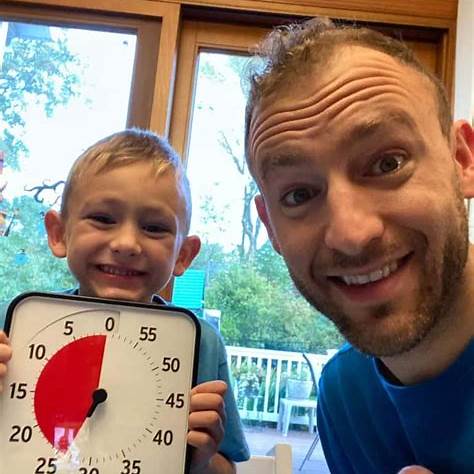Transitions—like moving from screen time to homework or leaving the park—can be surprisingly difficult for children with ADHD. These shifts often trigger resistance, emotional outbursts, or delays. But with predictable cues and supportive tools, transitions can become smoother and more manageable—for both your child and your household.
Why Transitions Are Hard for Children With ADHD
Children with ADHD often:
- Hyperfocus on a preferred task and resist stopping
- Struggle to regulate emotions when something ends
- Feel overwhelmed by sudden changes
- Forget the next step without visual or verbal cues
Transitions require a mental “shift”—something ADHD brains don’t do easily without support.
1. Give Advance Warnings
- Announce change early: “In 10 minutes we’ll turn off the tablet.”
- Combine verbal reminders with visual or auditory timers.
2. Use Countdown Tools
- Try sand timers or countdown clocks
- Play a specific “cleanup” song as a cue
- Visual timers help children see time and prepare for transitions
3. Post Visual Schedules
- Use charts with icons/photos detailing activities throughout the day
- Predictability helps reduce anxiety and guide ADHD brains
4. Offer Advance Choices
- “In 2 minutes it’s cleanup time—would you like toys or books first?”
- Choice boosts cooperation and gives a sense of control
5. Introduce a Transition Object or Cue
- Let them carry a timer, special card, or fidget
- These act as physical signals that change is coming
6. Add Movement to the Shift
- Have them jump or dance to the next task
- Physical transitions help release tension and refocus attention
7. Prepare Emotionally for Tough Transitions
- Validate feelings: “It’s hard to leave the playground.”
- Plan return visits or show visual calendars for reassurance
8. Practice Mini-Transitions in Calm Moments
- Play quick activity-switch games like “Switch!”
- These build mental flexibility in low-pressure settings
9. Celebrate Smooth Transitions
- “That was great—cleanup before the timer ended!”
- Sticker charts or small rewards reinforce positive behavior
10. Stay Calm During Resistance
- If they act out: stay neutral: “I see you’re upset. Let’s breathe.”
- Avoid escalating—offer a reset and try again
Final Thought
Transitions can be teachable moments with the right structure, empathy, and experience. Each successful shift builds confidence, emotional flexibility, and enduring coping strategies. With time and patience, smoother transitions mean smoother days—for everyone.
